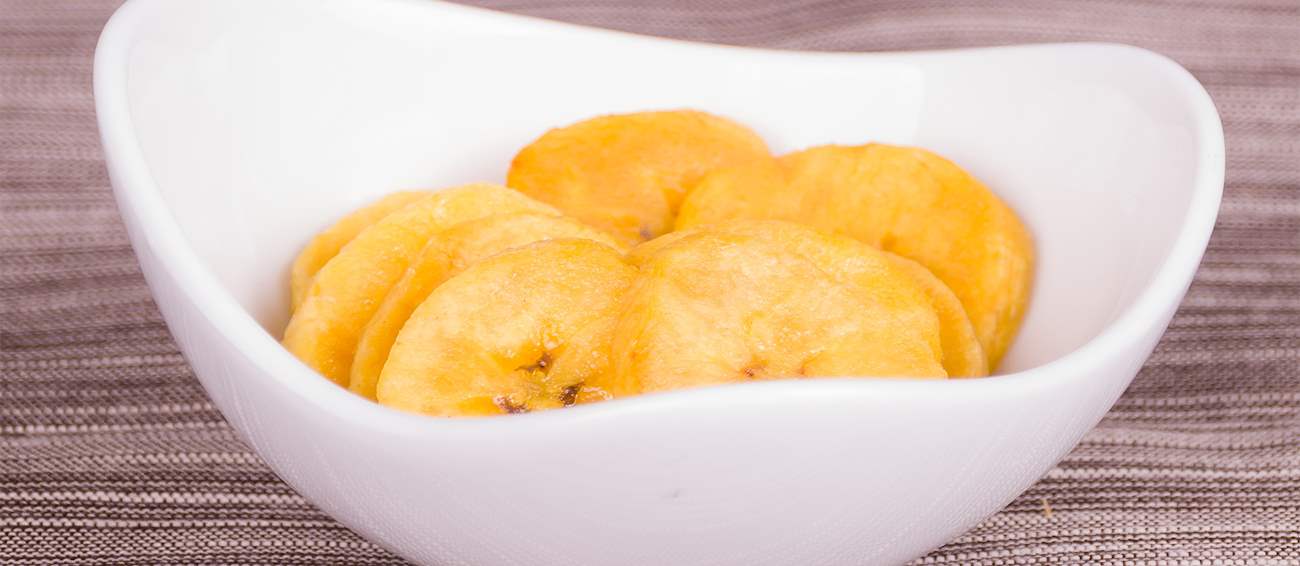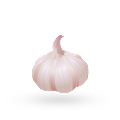MAIN INGREDIENTS
Choclo con queso is a Peruvian meal that is often consumed as a snack, an appetizer, or a side dish. Peruvian choclo is a type of corn with large kernels, nutty flavor, and chewy texture. When paired with creamy and salty cheese and a dab of butter on top, it results in choclo con queso (lit. corn with cheese).
Although it can be found in restaurants, this delicious snack is most commonly bought from street vendors. In some modern interpretations, the dish can also be made into a baked casserole with added onions, cumin, flour, and milk.
MAIN INGREDIENTS
Typically associated with Ecuador and the Peruvian region of Piura, chifles are thinly sliced, fried green plantains. They can be sliced crosswise or lengthwise, and while homemade varieties are usually sold as a convenient and portable street food item, they also come in form of factory-produced snacks that are available in supermarkets.
Chifles are typically sided with charqui - shredded dried and salted meat - or other snacks. Similar versions of fried plantains are found in many Latin American countries such as Guatemala, Cuba, and Puerto Rico.
MAIN INGREDIENTS
Originating from the Huancayo area of Peru, papa a la huancaína a is an authentic and unique potato dish consisting of a spicy, creamy, and rich cheese sauce that is drizzled over boiled yellow or white potatoes. The sauce consists of aji amarillo chilis, oil, milk, cheese, salt, and crackers that act as a thickener.
It can be served either cold or at room temperature, as a flavorful side dish or an appetizer. Traditionally, the dish is garnished with parsley, black olives, and sliced hard-boiled eggs. According to locals, the dish was invented in the late 1800s when a woman from Huancayo offered her dish to the workers that were constructing a railroad connecting Huancayo to Lima.
MOST ICONIC Papa a la huancaína
View moreTamalito is the Peruvian version of tamales. They are smaller and drier than tamales, but both are prepared in a similar fashion. Green maize is first combined with lard, and the combination is then filled with various ingredients and wrapped in corn leaves before being tied with a string and steamed in a pot.
Tamalitos are traditionally served as a light appetizer or a tasty side dish. It is recommended to pair them with salsa criolla.
MAIN INGREDIENTS
Ensalada de pallares is a traditional salad prepared with a combination of lima beans (locally known as pallar), white vinegar, lime juice, oregano, black pepper, chili peppers, onions, tomatoes, and cilantro. The beans should be soaked overnight before cooking.
Once cooked, you can peel the skin of the beans, but it's completely optional. The beans are combined with other ingredients, tossed, then garnished with cilantro or parsley before being refrigerated in order for the flavors to blend. It is recommended to serve ensalada de pallares with grilled meat or fish.
MAIN INGREDIENTS
Arroz arvejado is a traditional rice dish. It's made with a combination of long-grain rice, peas, olive oil, garlic, red onions, and seasonings. The peas are cooked, drained, then briefly blended into a coarse paste. The onions and garlic are sautéed in olive oil until soft, seasoned with salt and pepper, then mixed with the blended peas and rice that's been cooked to a fluffy consistency.
The dish is served immediately, either as a main or a side accompanying sudado dishes.
MAIN INGREDIENTS
Morusa or morusa de pallares is a traditional dish originating from Peru. This lima bean purée is made with a combination of lima beans, butter, salt, and pepper. The beans are covered with water in a large pot, then cooked over medium heat for a few minutes until the skin comes off easily.
They are drained, the skin is taken off, and the beans are then cooked until fully tender. Later on, the lima beans are blended with the cooking liquid, forced through a sieve, then mixed with butter and seasoned with salt and pepper. Morusa is typically served hot as an accompaniment to meat dishes.
MAIN INGREDIENTS
Purtumute is a Peruvian dish that is especially popular in the Amazonas region. It is prepared by stewing together various types of beans and corn. Once the beans and corn become tender, they are additionally flavored with lots of chopped cilantro and raw onions.
TasteAtlas food rankings are based on the ratings of the TasteAtlas audience, with a series of mechanisms that recognize real users and that ignore bot, nationalist or local patriotic ratings, and give additional value to the ratings of users that the system recognizes as knowledgeable. TasteAtlas Rankings should not be seen as the final global conclusion about food. Their purpose is to promote excellent local foods, instill pride in traditional dishes, and arouse curiosity about dishes you haven’t tried.








